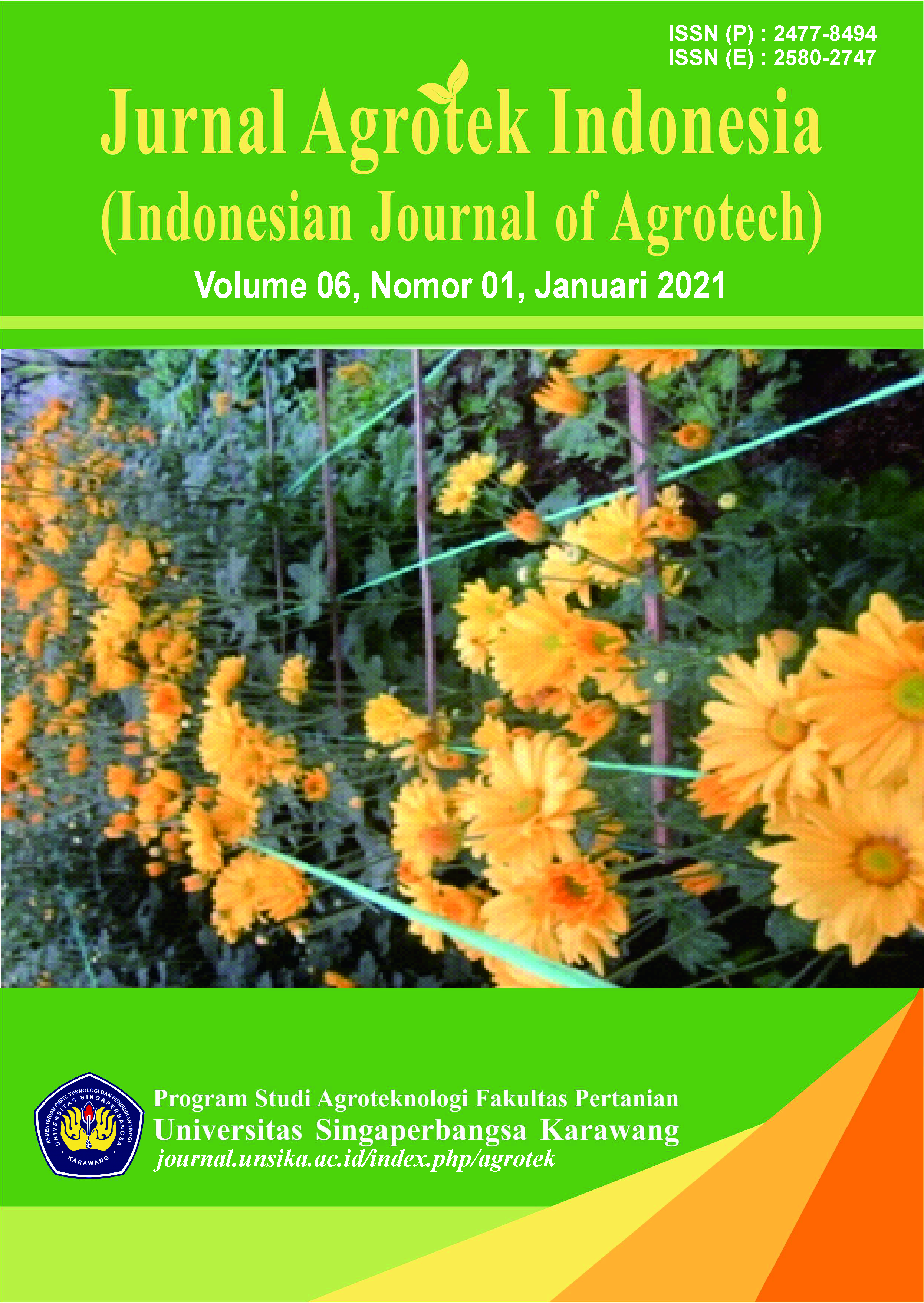Indonesia
Abstract
Propagation media rich in starch is important for the growth and development of the fungus Metharizium rileyi for its efficacy against Tribolium castaneum pests. The aim of this research was to select the best propagation media for Metharizium rileyi in order to obtain the best germination, conidia count, virulence and concentration of the propagation medium against T. castaneum. The method used was a single factor completely randomized design (RAL). The results of this study were the selection of propagation media affected the highest final colony diameter (8.00 cm). Rice media was significantly different from PDA (6.28 cm), Peanut (3.56 cm), and Bran (5.40 cm) The best conidia density was (4.62 x 10⁸ spores / ml) media Rice was not significantly different from PDA (5.95 x 10⁸ spores / ml), the highest germination capacity (58.21%) was on rice media, the difference in media weight was after 21 the highest hsi (1.85 grams) of rice was not significantly different from peanuts (2.22 grams) and rice bran (1.89 grams). The infectivity of the best propagation media on rice media had a significant effect on the mortality of T. castaneum (68.00%) at a concentration of 109 spores / ml, and the LC50 mortality rate was 5.86 x 107 spores / ml with an LT50 of 5.06 days and the difference in feed weight was not. effect on the number of insects in the T. castaneum test. The fungus M. rileyi has potential as a biological control agent to replace insecticides against T. castaneum.
Keywords: Conidia density, Lethal Concentration (LC50), Lethal Time (LT50), Metharizium rileyi, Mortality of Tribolium castaneum.
Downloads
Additional Files
Published
How to Cite
Issue
Section
License

This work is licensed under a Creative Commons Attribution-ShareAlike 4.0 International License.



